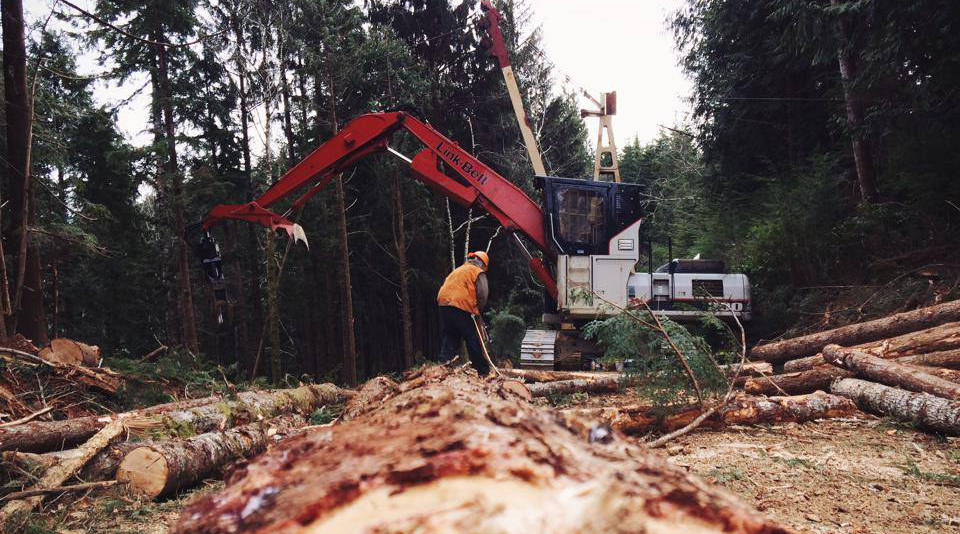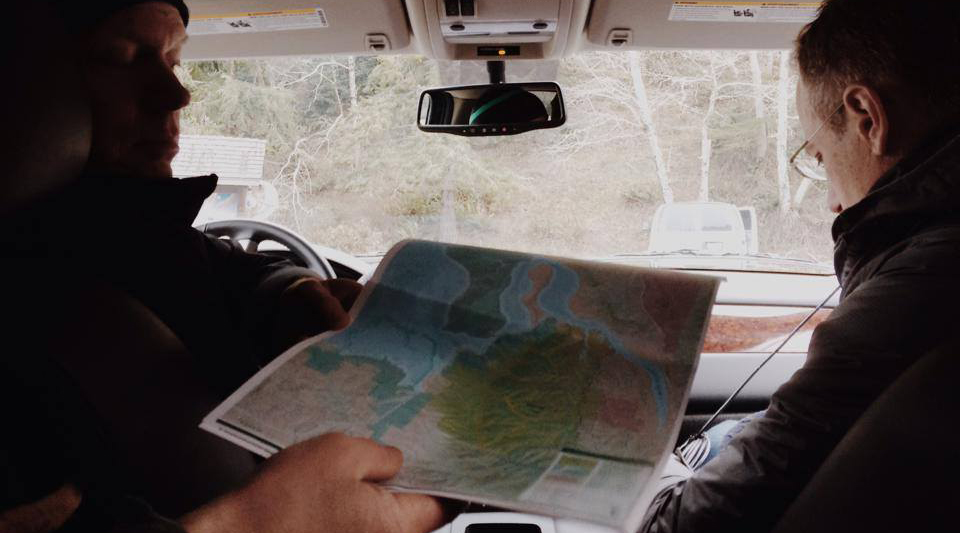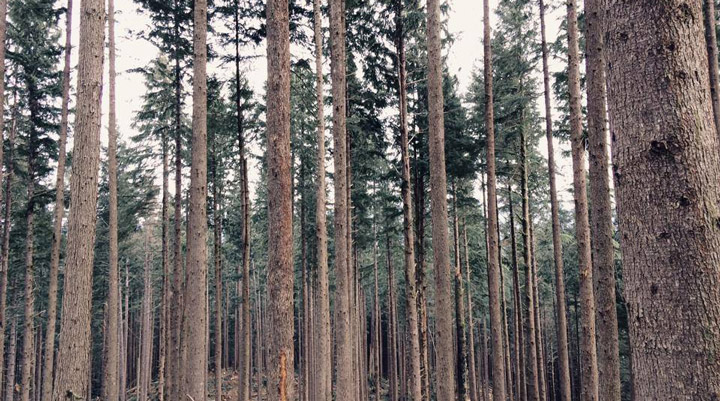ELLSWORTH CREEK PRESERVE
What Conservancy forester Kyle Smith does in the forest might shock some Nature Conservancy members. As The Forest Manager for The Nature Conservancy Preserves on the Washington Coast, Kyle is charged with developing healthy forests on Nature Conservancy land and amazingly, he spends a fair bit of his time overseeing logging operations. Yes, logging!
The idea of cutting trees on Nature Conservancy land may feel wrong, but it actually leads to important results for humans and nature. The southwestern Washington forests are some of the most productive on earth. For over a century they’ve been heavily logged. These clear-cut lands are replanted, but the result is not always a healthy forest with the habitat requirements that many wildlife species need to survive and flourish. That’s where Kyle comes in.
With a Forest Management and a Natural Resource Management degree, Kyle is responsible for the 8,000 acre forest restoration project known as the Ellsworth Creek Preserve located in the far southwest corner of the state. Much of the land there suffers from being clear-cut, then replanted creating a forest of packed-in, equal sized, single-species trees competing for light and resources while failing to create the varied and natural habitat birds and animals need to thrive. Like a doctor, Kyle diagnoses tracts of land and creates prescriptions to return them to ecological health. Often that prescription involves selective harvesting of trees to favor a diverse presence of tree sizes and species that were once present on the landscape. Following a thinning, additional trees and plants may be added in an effort to restore the natural diversity of plants that once graced the area.
Kyle may not truly see the results of his work because a return to a more natural state takes decades or longer. Initially after selective logging, he sees a lot of tall stringy trees – trees that previous shot up as high as possible to beat out other trees for light. In the years following thinning, those trees will put down broad roots then begin to grow larger in diameter, increasing their canopy sizes, as trees in that area once were. Returning to this more natural state is a slow process, but there are immediate environmental benefits such as development of a forest understory where before it was too dark and shaded for much of anything to survive. This forest understory provides forage for many species such as elk and a large variety of forest related birds.
Success requires long term commitment. Since 2006, The Conservancy has thinned more than 3800 acres in the region. But there are many thousands of acres waiting for thinning and restorative work that will create a healthier forest for plants, birds, animals and humans.
While it might feel strange for the Nature Conservancy to be running a logging operation, the impact is significant. Local sustainable jobs provide important support for communities in the region. The logs generate income for The Nature Conservancy, money that can be funneled right back into restoration and conservation work. Most important, the end result is healthier forest giving birds and animals the opportunity to thrive, sheltering streams where salmon can breed and creating recreational opportunities for humans.
So if you ever happen to see a logging truck carrying logs with The Nature Conservancy logo on them, don’t be shocked! It’s all part of the meticulous, scientific process of restoring forest health.

























